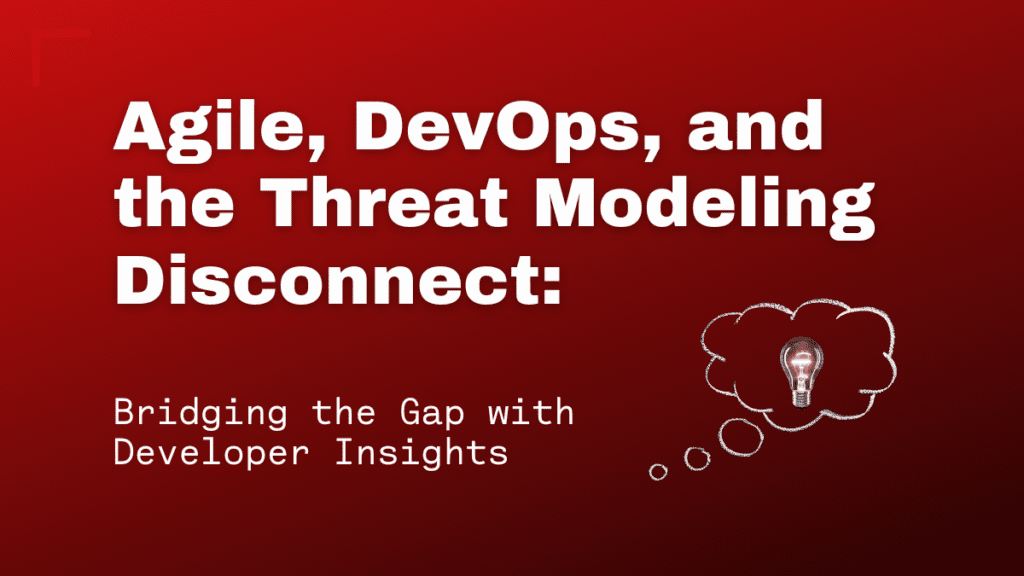In 2008, my journey into application security and threat modeling began when I joined HSBC’s Global Software Development Centre as a Software Security Engineer. With a clear mission to integrate security within the application development lifecycle, I ventured into an arena where the dynamics of software development were rapidly evolving. As time passed, the transition from the waterfall to Agile and DevOps methodologies not only transformed how applications were built but also demanded a paradigm shift in how security was conceptualized and implemented.
The Genesis of Threat Modeling
Initially, my journey into threat modeling embraced the traditional architecture-level approach, a common practice among many Application Security (AppSec) programs to this date. This method involved dissecting the application into its elemental parts—components, data stores, interfaces, and mapping out potential vulnerabilities and threats through Data Flow Diagrams (DFDs). Despite its foundational insights, this approach was limited in scope. It often missed intricate vulnerabilities inherent to the development phase, including coding errors, logic flaws, and the implications of using vulnerable dependencies.
While traditional threat modeling was diligently applied at the onset and revisited upon software deployment, a critical gap persisted—the lack of granular insights during the development process itself. The existing approach, while comprehensive at certain stages, missed the opportunity to incorporate real-time findings from automated security tools and penetration tests as the software was being developed. This oversight underscored the necessity for a more nuanced and dynamic approach to threat modeling, one that could integrate immediate feedback and adapt to the iterative and fast-paced nature of modern software development.
Towards a Comprehensive and Iterative Approach
The evolution towards Agile and DevOps necessitated a revised threat modeling methodology, one that was iterative and encompassing. This approach involves conducting architecture-level threat modeling at the outset and throughout the development lifecycle, integrating insights from a wider array of sources. A crucial advancement is the integration of data from automated scanners and manual vulnerability assessments, including security testing. This wealth of information provides a more complete picture of potential vulnerabilities, allowing for a proactive and informed response to threats.
Iterative Exploration and Integration
At the core of modern threat modeling lies its iterative nature, a continuous cycle of refinement and reassessment aimed at preemptively addressing potential threats. The process begins with asset identification and valuation, followed by creating a comprehensive application overview and breaking down the application to understand its structure and flow. The integration of findings from automated scanners and manual assessments is a game-changer, enriching the threat modeling process with real-world insights into vulnerabilities and potential attack vectors.
Developer-Centric Modeling: A Paradigm Shift
A transformative shift in threat modeling has been the move towards a developer-centric approach. This strategy integrates security considerations directly into the development process, encouraging developers to adopt an attacker’s mindset. By incorporating abuse cases and “evil user stories,” developers gain a profound understanding of potential vulnerabilities, enabling them to embed security measures into the application from the ground up.
Embracing Data-Driven Insights
A pivotal insight is the indispensable value of integrating data from automated scanners, manual sources of vulnerabilities, and security testing into the threat modeling process. This integration ensures a comprehensive assessment of the application’s security posture, highlighting vulnerabilities that might otherwise go unnoticed until later stages or, worse, until after deployment.
Challenges and Opportunities Ahead
Despite the advancements, the journey through application threat modeling presents ongoing challenges. The complexity of modern applications, combined with the swift pace of Agile and DevOps cycles, requires an agile, informed, and adaptive approach to security. Tools and methodologies must continually evolve to keep pace with these demands, enabling teams to efficiently identify and mitigate threats.
Charting the Future of Secure Application Development
The evolving landscape of threat modeling is a testament to the cybersecurity community’s adaptability and commitment to safeguarding digital infrastructure. By embracing change, prioritizing data-driven insights, and fostering a culture of security across development teams, we can navigate the complexities of the modern digital landscape with confidence and resilience.
Key Takeaways:
- Integration of Comprehensive Data Sources: Prioritize the integration of data from automated scanners, manual vulnerability assessments, security testing, and penetration testing into the threat modeling process. This rich data source is crucial for identifying and mitigating potential vulnerabilities more effectively.
- Adopt an Iterative Approach: Embrace the iterative nature of threat modeling to align with Agile and DevOps methodologies, ensuring continuous security assessment and adaptation.
- Foster Developer Engagement: Encourage a developer-centric approach to threat modeling, enabling developers to think like attackers and proactively identify vulnerabilities through abuse cases and “evil user stories.”
- Continuous Evolution of Tools and Processes: Tools and processes must evolve in tandem with the changing landscape of software development and cybersecurity threats, enhancing the ability to identify and address vulnerabilities efficiently.
- Cultivate a Security-Aware Culture: Building a culture of security awareness and responsibility across all development phases and teams is essential for creating secure, resilient applications.
As we press on, it’s critical to understand that while traditional architecture-level threat modeling forms the cornerstone of our security efforts, its effectiveness is significantly amplified when integrated with iterative, developer-focused processes. Adding to this, the incorporation of insights from automated scanners and security testing activities enriches our understanding and response to potential threats. This comprehensive approach, marrying foundational practices with developer insights and external data sources, fortifies our security posture. It ensures our strategies are both robust and agile, capable of adapting to the swift currents of technological progress. By weaving these elements together, we lay down a blueprint for a future where our digital domains are secure, resilient, and continuously evolving.
If you are interested in further reading on this topic, check out our “Threat Modeling and Risk Assessment For Developers Process Guide”, available here.

